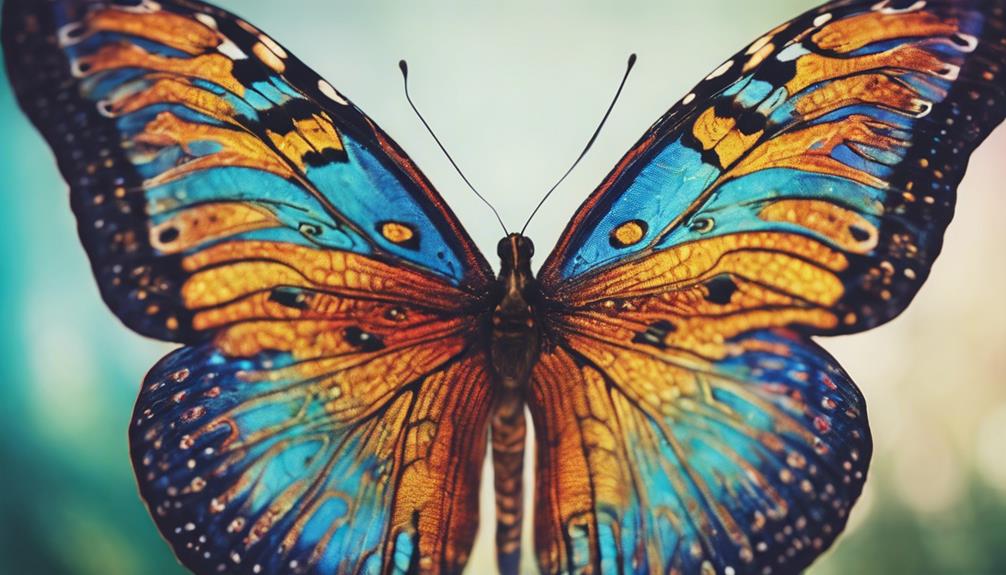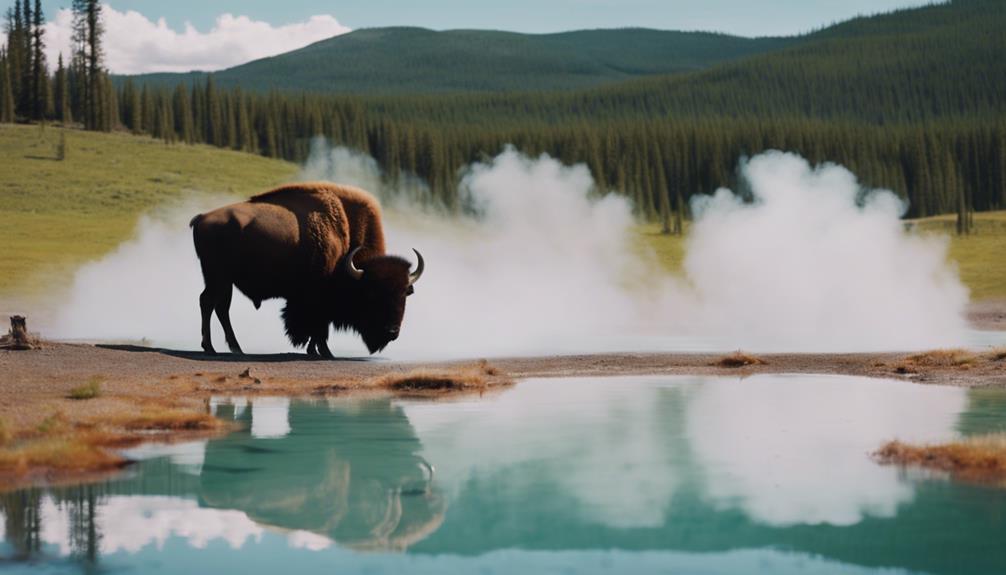Discover the enchanting world of butterflies! Explore over 18,000 species showcasing vibrant colors for various purposes. Observe their specialized diets and diverse feeding habits. Marvel at the epic migration journeys spanning thousands of miles. Admire their brief yet beautiful 3-4 week lifespan. Reveal intricate wing structures with taste-perceiving feet. Appreciate their crucial role in ecosystem balance. Get intrigued by their unique behavior of locating food through feet taste receptors. Uncover more wonders about butterflies' fascinating nature.
Butterfly Diversity
Discover the captivating world of butterfly diversity, where over 18,000 species display a remarkable array of colors and patterns. From the vibrant hues of the Monarch butterfly to the intricate designs of the Blue Morpho, each species brings its unique beauty to the natural tapestry of the world. These colors not only serve as camouflage or warnings to predators but also play an essential role in attracting mates.
Witness the magic of complete metamorphosis as caterpillars transform inside a chrysalis into magnificent butterflies. This process, with its distinct stages of egg, larva, pupa, and adult, highlights the incredible resilience and adaptability of these creatures. Additionally, different butterfly species have specific host plants where they lay their eggs, showcasing a delicate ecological balance between the butterflies and their habitats.
As important pollinators, butterflies contribute significantly to the reproduction of various plant species, ensuring environmental harmony and biodiversity. Their delicate fluttering not only brings joy to the beholder but also serves as a vital link in the intricate web of life.
Unique Feeding Habits
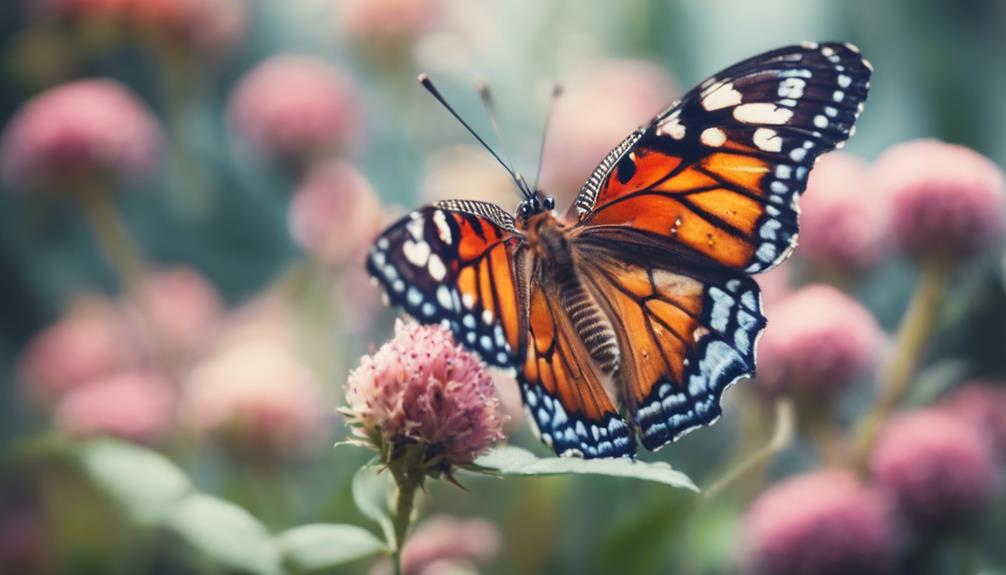
Did you know that butterflies have unique feeding habits that set them apart from other insects? They use their proboscis like a straw to sip nectar and obtain essential nutrients. Caterpillars also have specialized diets, feeding exclusively on particular plants like milkweed to fuel their growth and development.
Nectar Consumption Patterns
Butterflies display fascinating nectar consumption patterns, showcasing their unique feeding habits and essential role in ecosystem dynamics. When observing these delicate creatures, you'll notice how they use their proboscis like a straw to sip nectar from flowers. Additionally, some butterfly species have diverse diets, including sap flows, pollen, fruit, and even animal dung, all providing important nutrients for their survival. Understanding the nectar consumption patterns of butterflies is key to appreciating their ecological roles as pollinators and their significant impact on plant reproduction.
- Butterflies use their proboscis to suck up nectar like a straw.
- Some species feed on sap flows, pollen, fruit, and even animal dung.
- Their unique feeding habits play an important role in their energy acquisition and overall survival.
Caterpillar Host Plant
As you observe the fascinating nectar consumption patterns of butterflies, you'll discover that caterpillars have specific host plants essential for their food and survival. Caterpillars, also known as larvae, rely on these host plants for nutrients and energy to grow and develop. Each butterfly species has unique preferences when it comes to host plants, making these relationships critical for their survival. Without suitable host plants, caterpillars may struggle to complete their life cycle, impacting butterfly populations. Understanding these caterpillar host plant relationships is essential for butterfly conservation efforts. By planting native host plants in your garden, you can support caterpillar survival and contribute to the preservation of these magnificent creatures.
| Key Points | Description |
|---|---|
| Larva Diet | Relies on specific host plants for nutrition. |
| Host Plant Preferences | Vary between butterfly species. |
| Conservation Importance | Understanding essential for butterfly preservation. |
Remarkable Migration Patterns
Have you ever marveled at the astonishing distances the North American Monarch butterfly can travel during its migration? Migration is not just a crucial flight; it's a essential behavior that guarantees the survival of butterflies like the Monarch. Here are some fascinating facts about their migration patterns:
- The North American Monarch butterfly can travel up to 2,500 miles during its migration, showcasing their incredible perseverance and navigation skills.
- Migration helps butterflies find suitable conditions for survival, such as warmer temperatures and access to food sources necessary for their life cycle.
- Cold weather can render butterflies immobile, prompting them to migrate to warmer regions where they can thrive and continue their journey.
Understanding the remarkable migration patterns of butterflies sheds light on the lengths they go to guarantee their survival and well-being. It's a wondrous spectacle of nature's resilience and adaptability in the face of changing conditions.
Short Lifespan

Did you know that the average adult butterfly only lives for about 3-4 weeks? Some species have an incredibly short lifespan of just 24 hours! Despite their brief time on Earth, butterflies go through rapid metamorphosis stages and play an essential role in the ecosystem.
Brief Life Cycle
In just a matter of weeks, adult butterflies experience a brief yet fascinating lifespan, with some species living for only a single day. The journey of a butterfly from egg to adult is filled with wonders:
- Egg Stage: The beginning of life starts as a tiny egg laid on a host plant.
- Larva (Caterpillar) Stage: Hatching from the egg, the caterpillar eats voraciously to grow.
- Pupa (Chrysalis) Stage: The transformation begins, where the caterpillar undergoes a remarkable change inside its protective casing.
Butterflies, with their short yet vibrant lives, showcase the beauty and fragility of existence. Each species adds a unique hue to the canvas of nature, making their brief time on Earth truly enchanting.
Rapid Metamorphosis Stages
Rapid metamorphosis stages mark the swift and captivating transformation of butterflies, showcasing the marvel of their short lifespan. From egg to larva (caterpillar), pupa (chrysalis), and finally adult butterfly, their metamorphosis is quick and fascinating. In just 10 to 15 days, butterflies complete their entire transformation, emphasizing the speed of change. The larval stage, caterpillars, eat voraciously to support their rapid growth into adult butterflies. With a lifespan of only 2-4 weeks, adult butterflies exemplify efficient metamorphosis stages. Witnessing these rapid changes highlights the beauty and wonder of butterfly transformation in a short timeframe.
Ecological Significance Impact
Short lifespans in butterflies, ranging from 3-4 weeks on average, hold significant ecological importance despite their brevity. Butterflies impact the environment in fascinating ways:
- Pollination: During their short lives, butterflies play an important role in pollinating flowers, aiding in plant reproduction.
- Conservation Efforts: Understanding the impact of short lifespans emphasizes the need for conservation efforts to protect butterfly populations.
- Ecosystem Health: Butterflies contribute to the overall health of ecosystems by serving as indicators of environmental quality and biodiversity.
These facts highlight how even though butterflies have short lifespans, their presence is essential for maintaining healthy ecosystems and the balance of nature.
Intriguing Wing Structures

Butterfly wings, composed of thousands of intricate scales, are a marvel of nature's design, allowing for stunning colors and patterns that captivate onlookers. The vibrant hues on butterfly wings are not just for show; they serve a pivotal purpose beyond beauty. Surprisingly, butterflies can taste with their feet, allowing them to identify suitable spots for laying eggs or finding nectar-rich flowers. The delicate wing structures of butterflies play a vital role in distinguishing them from other winged insects. While moths tend to have feathery or furry antennae, butterflies have slender, clubbed antennae. This intriguing difference between a butterfly and a moth can be observed in their wing structures as well. The way light interacts with the scales on butterfly wings creates a mesmerizing effect, making them appear almost magical in flight. So, next time you marvel at a butterfly's wings, remember the intricate structures that make them not only beautiful but also functional in the butterfly's world.
Importance in Ecosystem
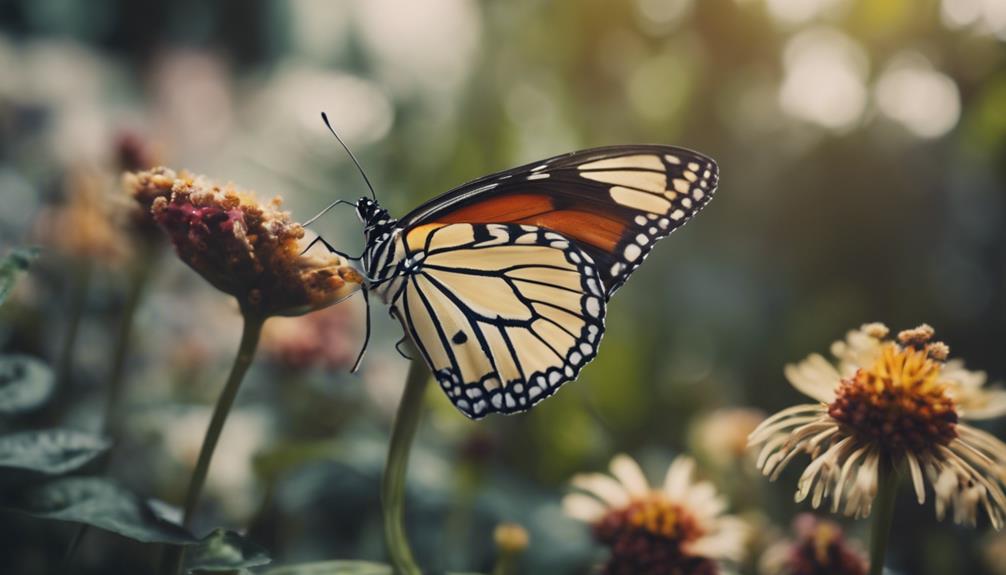
Playing an important role in maintaining ecosystem balance, butterflies contribute greatly to plant reproduction and overall environmental health. Butterflies play a critical role in pollination, aiding in plant reproduction and ecosystem health. Their presence serves as an indicator of ecosystem health since they are sensitive to changes in habitat and climate. Conservation efforts play a pivotal role in protecting butterflies and preserving biodiversity in delicate ecosystems. By safeguarding butterfly populations, we can secure the health and resilience of our environment. Additionally, butterfly tourism not only offers economic benefits but also raises awareness about the significance of these delicate creatures. Through guided tours and educational programs, butterfly tourism supports local economies and promotes the conservation of butterfly habitats. Hence, butterflies are not just beautiful insects fluttering around; they are essential indicators of ecosystem health and valuable contributors to environmental balance.
Notable Butterfly Behavior
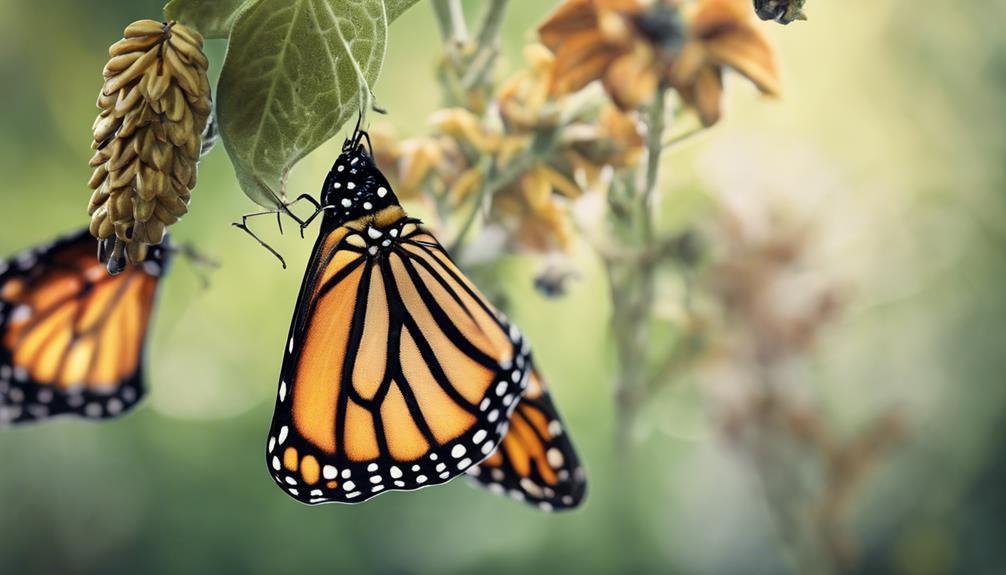
Indulging in a truly fascinating behavior, butterflies utilize their feet to taste and locate precise food sources in their environment. Taste receptors on butterfly feet play an important role in guiding their daily activities, helping them find the right plants for nourishment. When butterflies land, whether to eat or mate, they rely on these taste receptors. So, when a butterfly lands on you, it's likely evaluating for nutrients using its feet. This unique butterfly behavior showcases their incredible adaptation to the environment, ensuring they can identify suitable food sources efficiently.
Conclusion
Now that you know these fascinating butterfly facts, you may be thinking, 'But aren't butterflies just pretty insects?' While they may be visually stunning, butterflies play an essential role in our ecosystem as pollinators and indicators of environmental health. Next time you see a butterfly flutter by, remember the wonders they represent and how important they are to the world around us. Keep exploring and appreciating the beauty and importance of these delicate creatures!
